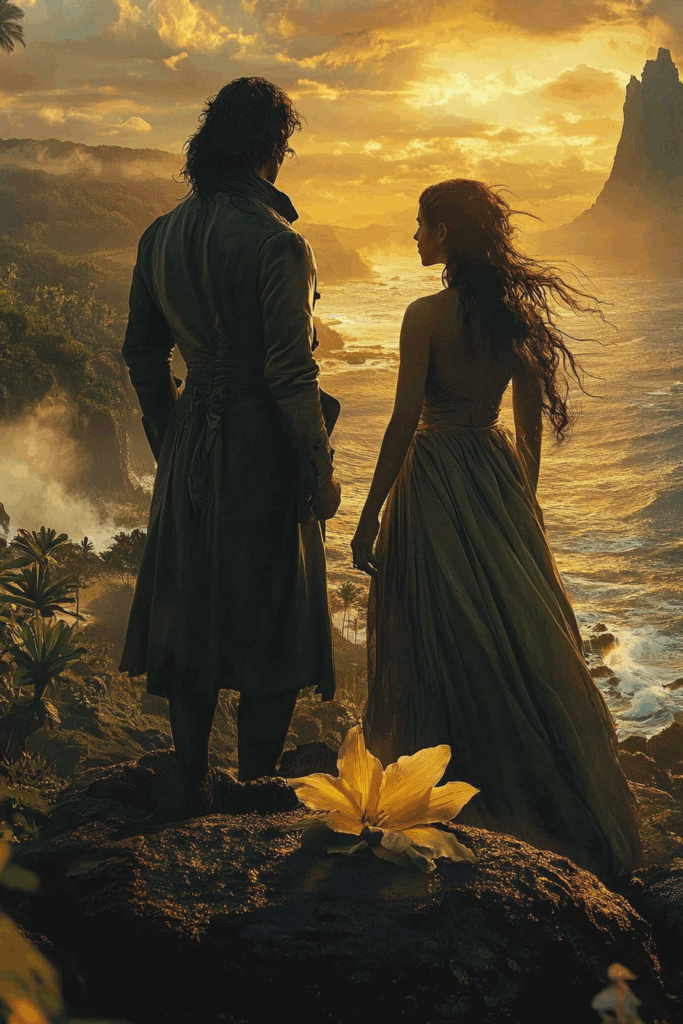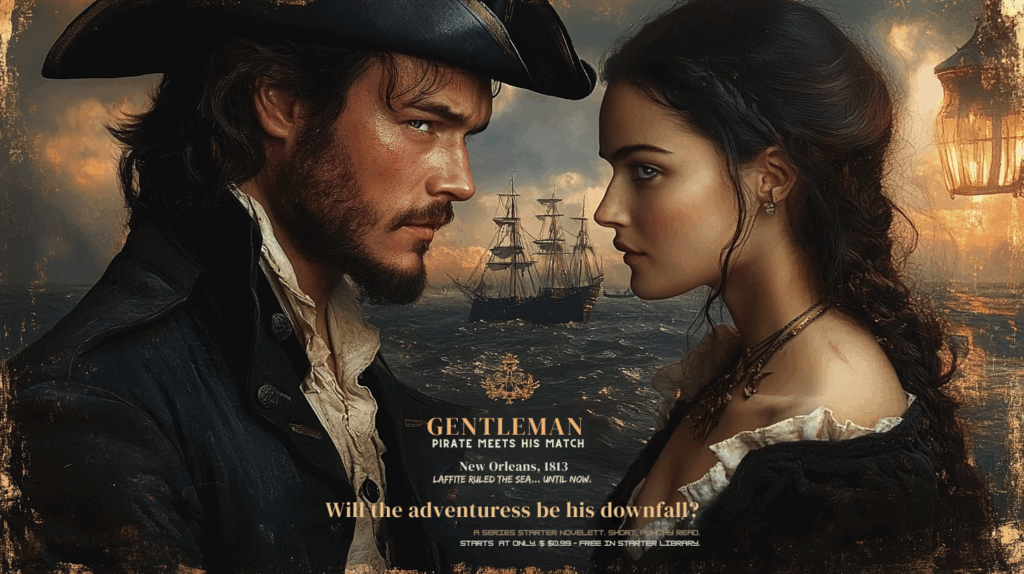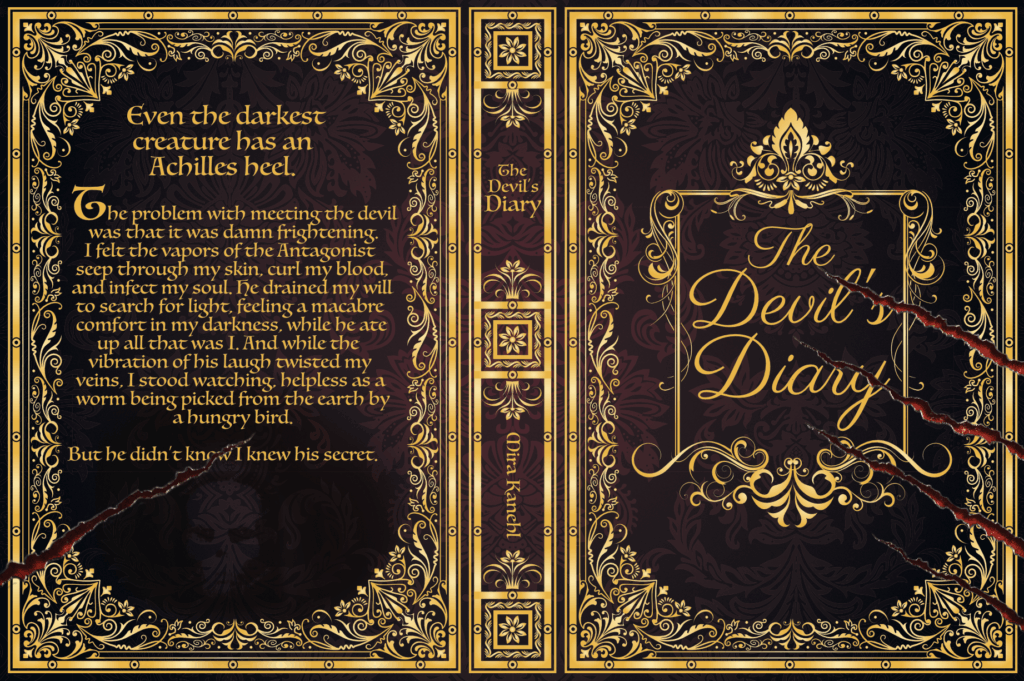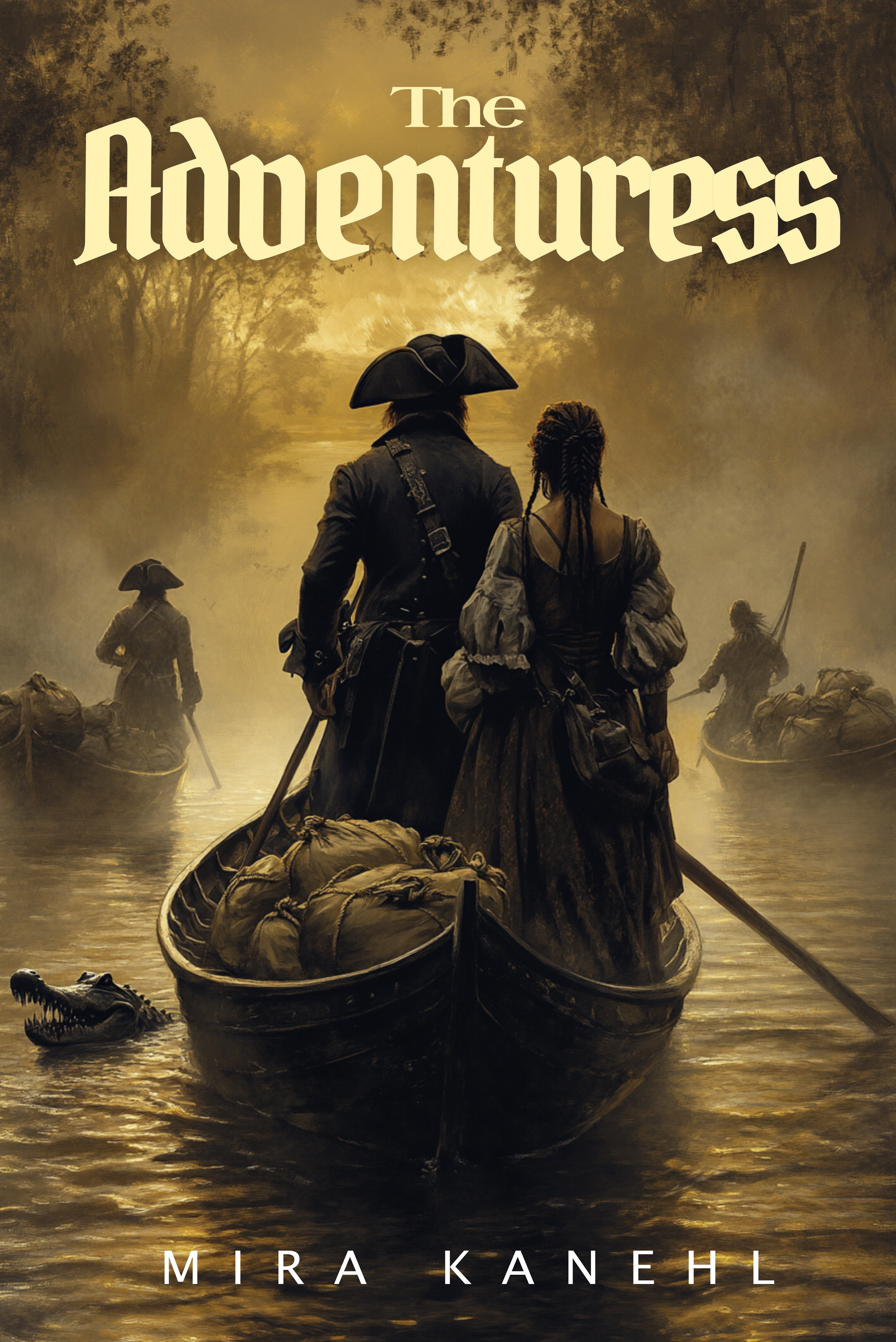About Mirà Kanehl’s books
The Ultimate Guide to Mira Kanehl Books: Historical Fiction And Pirate Adventures
France, Hawai’i, New Orleans, and the seven seas:
1811-1825
Ahoy, historical fiction enthusiasts! If you’re searching for Mira Kanehl books that blend authentic historical research with captivating storytelling, you’ve discovered a treasure trove of literary adventures. In the vast sea of historical fiction, few authors navigate the treacherous waters between scholarly accuracy and page-turning narrative quite like Mirà Kanehl.
This French-influenced author has dedicated years to mastering the craft of historical fiction, driven by an insatiable hunger for stories that transport readers across time and oceans. From the pirate-infested waters of 1820s Gulf Coast to the exotic landscapes of early Hawaiian islands, Kanehl’s meticulous research and immersive writing style create worlds so authentic you can almost taste the salt spray and feel the tropical trade winds.
In this comprehensive guide, you’ll discover everything you need to know about Mirà Kanehl books, including detailed reviews of her interconnected series, upcoming releases, and the fascinating research process behind each historically accurate tale. Whether you’re drawn to swashbuckling pirate adventures, time-traveling mysteries, or the cultural complexities of 19th-century Hawaii, you’ll find your next literary obsession among these carefully crafted historical novels.
From the Naupaka series’ exploration of French-Hawaiian connections to the bold piratical adventures of “One Virtue And A Thousand Crimes,” prepare to embark on a reading journey that promises both entertainment and enlightenment. These aren’t just historical novels—they’re meticulously researched time machines that honor the past while captivating modern readers.
You’ll learn:
- Mirà Kanehl’s writing journey
- Why there’s French influence in her writing
- Her writing style and approach
- What makes her writing unique
- How her series Napuaka and One Virtue And A Thousand Crimes are connected
- Her recommended reading order
- Her upcoming and planned books

Want free historical content?
- Who is Mira Kanehl? Meet the Historical Fiction Mastermind
- The Naupaka Series: Exploring 1820s Hawaii Through French Eyes
- Time Is A Lullaby: When Historical Fiction Meets Time Travel
- One Virtue And A Thousand Crimes: Authentic Pirate Fiction
- Other Upcoming and Planned Mira Kanehl Books
- Reading Order and Series Connections of Mirà Kanehl Books
- Final Thoughts
- FAQ
Who is Mira Kanehl? Meet the Historical Fiction Mastermind
From Teenage Inspiration to Published Author
Mirà Kanehl’s journey into historical fiction began with a spark of inspiration at just 15 years old, when a particularly engaging teacher ignited a story idea that would eventually bloom into multiple interconnected series. Unlike many authors who rush to publish their first concepts, Kanehl demonstrated remarkable patience and wisdom, recognizing at 26 that her original story wasn’t ready for publication. This mature approach led her to develop extensive backstories and character foundations—a decision that would prove instrumental in creating her richly layered narratives.
Her deep connection to French culture stems from formative experiences spending summers in France and attending a French school for three years. This immersion went far beyond casual exposure; she studied French literature in depth, including works by Molière, which profoundly influenced her writing style and cultural perspective. This authentic French influence permeates her work, from character development to dialogue authenticity, setting her apart in the historical fiction landscape.
Kanehl’s dedication to historical accuracy borders on obsession. She doesn’t simply research surface details—she immerses herself so completely in historical periods that she sometimes experiences unsettling psychological effects, feeling the presence of historical figures she’s studying. This level of commitment ensures that every detail, from period-appropriate dialogue to cultural nuances, rings true to readers seeking authentic historical experiences.
Writing Philosophy and Approach
High quality writing that glues you to the page—this isn’t just Kanehl’s aspiration; it’s her uncompromising standard. She maintains a ruthless editing process where only writing that achieves this magnetic quality survives. Everything else gets deleted before she even begins formal editing, explaining why her writing process spans years rather than months.
Her extensive research methodology resembles that of a professional historian more than a typical novelist. Kanehl dives into primary sources, court records, contemporary newspapers, and archaeological findings to build authentic foundations for her stories. When researching Jean Lafitte for her pirate series, she didn’t rely on popular histories but tracked down original government correspondence and legal documents to understand the complex political realities of Gulf Coast piracy.
This commitment to authenticity over speed means readers can trust that every historical detail has been carefully verified and thoughtfully integrated into the narrative, creating immersive experiences that both entertain and educate.
The Naupaka Series: Exploring 1820s Hawaii Through French Eyes
A Half Flower: The Foundation Story
“A Half Flower” serves as the cornerstone of Kanehl’s interconnected literary universe, introducing readers to Balzac, a French ancestor whose actions in 1820s Hawaii create ripple effects that will impact his descendants for generations. This Hawaii historical fiction book masterfully weaves together personal drama and sweeping historical change as Balzac navigates the complex social landscape of early 19th-century Honolulu.
The plot follows Balzac as he arrives in the Hawaiian Islands during a pivotal moment in their history, when ancient Polynesian traditions clash with encroaching Western influences. His personal journey becomes intertwined with larger historical forces, including the delicate political negotiations between native Hawaiian rulers and foreign merchants, missionaries, and adventurers seeking fortune in the Pacific.
Kanehl’s research for this foundational story involved extensive study of primary sources, including missionary journals, ship logs, and Hawaiian oral histories. She meticulously researched everything from period shipping routes to traditional Hawaiian spiritual practices, ensuring that Balzac’s experiences reflect authentic historical realities rather than romanticized fiction. The result is a narrative that honors both French and Hawaiian perspectives without appropriating or oversimplifying either culture.
The title itself carries deep symbolic meaning, referencing the Hawaiian naupaka flower legend of lovers separated by the gods—half-flowers that can only become whole when reunited. This metaphor perfectly captures the series’ central themes of connection across time and space, of incomplete stories waiting for resolution through future generations.

A Half Flower
Lyon, 1816
Balzac Voclain’s descent into peril began with a roll of Camembert. True, it’s not uncommon for a boy his age to get into trouble now and then. But Balzac didn’t get into ordinary trouble. He saw things he wasn’t supposed to. And all because he once saved a rabbit.
Historical Context: Why 1820s Hawaii Matters
The 1820s represent a crucial turning point in Hawaiian history, making this period particularly rich for historical fiction exploration. During this decade, the Hawaiian Kingdom balanced precariously between preserving ancient traditions and adapting to rapidly changing global circumstances. The arrival of Christian missionaries in 1820 marked the beginning of profound social transformation, while increasing international trade brought both opportunities and challenges to island communities.
Political tensions ran high as Hawaiian rulers like King Kamehameha II navigated complex relationships with American missionaries, British naval officers, and various merchant interests. The traditional kapu system faced unprecedented challenges, while new ideas about governance, religion, and social structure created internal conflicts within Hawaiian society.
Cultural conflicts emerged as Western concepts of property ownership, written law, and individual rights clashed with traditional Polynesian values of communal responsibility and spiritual connection to the land. These tensions provide authentic dramatic backdrop for Balzac’s story, as he witnesses and participates in historical changes that would reshape the Pacific forever.
Time Is A Lullaby: When Historical Fiction Meets Time Travel
Plot Overview and Unique Elements
“Time Is A Lullaby” represents the evolution of Kanehl’s original teenage inspiration into a sophisticated exploration of temporal displacement and family legacy. The story centers on Melodie, a young French woman who has always known about her family’s mysterious connection to Hawaii but never understood its true nature. When she discovers enigmatic letters in her grandfather’s attic suggesting impossible travel, she faces a choice that will define her existence: wonder forever or test it herself.
What sets this time travel historical novel apart is its dual displacement mechanism—Melodie doesn’t simply travel through time, but experiences both temporal and geographical transportation. The letters hint at family members who somehow journeyed not just to distant Hawaii, but to different eras entirely. This discovery forces Melodie to question everything she thought she knew about her ancestry and the nature of reality itself.
The connection to the Naupaka series runs deeper than shared geography. Melodie’s journey directly links to Balzac’s story from “A Half Flower,” revealing that the family’s Hawaiian connection spans not just generations but centuries. The naupaka flower’s symbolism of separated lovers destined for reunion takes on new meaning when viewed through the lens of temporal displacement, suggesting that some connections transcend both time and space.
The Challenge of Time Travel Historical Fiction
Balancing historical accuracy with speculative elements presents unique challenges that Kanehl navigates with remarkable skill. Unlike pure historical fiction, this genre requires maintaining authenticity for multiple time periods while creating believable mechanisms for temporal travel. Kanehl’s approach grounds the fantastical elements in meticulous historical research, ensuring that when Melodie arrives in the past, she encounters a world built on solid historical foundation.
The research challenges multiply exponentially when writing across different eras. Kanehl must understand not only 1820s Hawaii and contemporary France, but also how a modern character would psychologically respond to temporal displacement. What cultural assumptions would create the most conflict? How would someone raised in our era react to finding themselves in a world without modern conveniences, different social structures, and entirely different worldviews?
This hybrid genre appeals to both historical fiction purists and speculative fiction enthusiasts. Historical fiction readers appreciate the authentic period details and cultural accuracy, while science fiction fans enjoy the temporal mechanics and their implications. The challenge lies in satisfying both audiences without compromising either the historical authenticity or the speculative elements.
French Cultural Elements in Mirà Kanehl Books
Kanehl’s deep connection to French culture shines particularly bright in “Time Is A Lullaby,” where Melodie’s French identity becomes crucial to both plot and character development. The authentic French dialogue and cultural references stem from Kanehl’s years of French education and cultural immersion, creating a protagonist who thinks and reacts with genuine French sensibilities rather than stereotypical assumptions.
Cultural authenticity extends beyond language to encompass French attitudes toward family, history, and adventure. Melodie’s approach to discovering her family secrets reflects distinctly French values of intellectual curiosity and cultural preservation. Her reactions to temporal displacement are filtered through a French cultural lens, creating unique perspectives on historical events.
This cultural depth particularly appeals to Francophile readers who appreciate authentic representation of French character and customs, while also serving the broader narrative by creating a protagonist whose cultural background genuinely influences her journey through time and space.

One Virtue And A Thousand Crimes: Authentic Pirate Fiction
Jean Lafitte and Gulf Coast Piracy
“One Virtue And A Thousand Crimes” emerged from Kanehl’s fascination with a mysterious pirate woman who appeared in “A Half Flower” but demanded her own story. This led to extensive research into the legendary Jean Lafitte, whose complex legacy provides the perfect historical framework for authentic Jean Lafitte historical fiction. Unlike the romanticized pirates of popular culture, Lafitte operated in a morally ambiguous world where the lines between patriot and criminal, businessman and buccaneer, constantly shifted with political winds.
The historical Jean Lafitte commanded a sophisticated operation from his base in Barataria Bay, south of New Orleans, where he established what amounted to a pirate republic complete with its own laws, customs, and economic system. His organization wasn’t simply a band of lawless criminals—it functioned as a complex business enterprise that provided goods and services to New Orleans residents while challenging traditional notions of legitimate commerce.
The political complexities of early 19th-century Gulf Coast piracy create rich dramatic possibilities that Kanehl exploits masterfully. Lafitte’s role in the Battle of New Orleans, where he aided Andrew Jackson against the British, demonstrates how pirates could simultaneously operate outside the law while serving national interests. This historical reality provides authentic foundation for exploring themes of loyalty, patriotism, and the fluid nature of legal and illegal activity during turbulent times.
Kanehl’s research extended beyond popular histories to include court records, government correspondence, and contemporary newspaper accounts that reveal the true complexity of Lafitte’s operations. Her portrayal avoids both demonization and romanticization, presenting piracy as it actually existed—a dangerous but sometimes necessary response to economic and political constraints of the era.

The Adventuress
Jean Laffite: gentleman and merchant to New Orleans residents, thorn in the eye to its politicians, pirate to Cosma Drilo. She knows what she wants, and he doesn’t like her meddling with his business.
Female Pirates in Historical Context
One of the most compelling aspects of Kanehl’s pirate fiction lies in her authentic portrayal of women in pirate communities. Historical research reveals that women weren’t merely romantic interests or victims in pirate stories—they were often integral to operations, managing finances, gathering intelligence, and sometimes commanding vessels themselves. Historical figures like Anne Bonny and Mary Read proved that female pirates weren’t fantasy but documented reality.
Kanehl’s mysterious pirate woman reflects this historical accuracy while avoiding the common trap of creating anachronistically modern female characters. Instead, she develops a protagonist who operates within the constraints and opportunities available to women in early 19th-century pirate communities, making her strength and independence believable within historical context.
The challenge of writing authentic female pirate characters lies in balancing historical realism with compelling characterization. Kanehl achieves this by thoroughly researching the social structures of pirate communities, understanding how women actually gained power and influence in these unconventional societies. Her character’s journey explores what freedom meant for women who chose the dangerous liberty of piracy over the safe constraints of respectable society.
Writing Style and Tone of Mirà Kanehl Books
“One Virtue And A Thousand Crimes” deliberately embraces a bold, piratical narrative voice that distinguishes it from the more contemplative tone of the Naupaka series. The dialogue incorporates authentic nautical terminology and the rough humor of maritime communities, creating an immersive atmosphere that transports readers directly onto the deck of a pirate vessel.
Kanehl’s use of period-appropriate language extends beyond simple vocabulary to encompass the rhythms and patterns of early 19th-century speech. Characters speak with the directness of people who face death regularly and the pragmatism of those operating outside conventional society. This linguistic authenticity enhances the historical immersion while maintaining accessibility for modern readers.
The exploration of freedom themes runs throughout the narrative, examining what liberty means, what it costs, and who gets to claim it. The title itself reflects the moral complexity central to pirate life—perhaps one virtue can justify a thousand crimes, or maybe a thousand crimes can be redeemed by a single virtue. This ambiguity mirrors the historical reality of piracy, where conventional morality often proved inadequate for judging actions taken in extraordinary circumstances.
Other Upcoming and Planned Mira Kanehl Books
The Devil’s Diary: Medieval Supernatural Fiction
“The Devil’s Diary” represents Kanehl’s boldest venture yet into the intersection of historical fiction and supernatural elements. Born from her fascination with medieval book protection and the superstitions that governed daily life in that era, this project explores how manuscripts were created, preserved, and feared during times when literacy was rare and books held almost mystical power.
The story centers around a mysterious diary discovered among the possessions of a recently deceased monk who had traveled extensively and collected unusual artifacts. Kanehl’s research into medieval superstitions has revealed a world where the mere presence of certain texts was believed to invite supernatural influence—a concept that forms the psychological backbone of her narrative.
However, this project has presented unique research challenges that have given Kanehl pause. Her commitment to authentic historical immersion has led to genuinely unsettling experiences during the writing process. When she attempts to truly inhabit the medieval mindset necessary for authentic storytelling, she reports experiencing “creepy feelings” similar to those she encountered while researching execution scenes for the Naupaka series. A particularly eerie coincidence occurred when news broke of a tomb discovery featuring a woman from exactly the time period and location she was researching, leading Kanehl to joke that historical figures might somehow influence the creative process.
Despite these psychological challenges, “The Devil’s Diary” remains in active development, with Kanehl working to balance authentic medieval atmosphere with her own emotional well-being. No firm publication date has been announced as she continues to navigate the complex research requirements.

975 AD, Áth Cliath (Dublin)
Secrets are odd. One has the innate urge to share them with someone and yet fears their disclosure. Some literates even write them down lest they forget them, sharing only with the unfortunate reader who, usually after the death of their author, stumbles upon the dusty covers. As it happens, the Devil is one such literate who has secrets.
The Beast I Loved: Reimagining Classic Tales
This upcoming project emerged from Kanehl’s discovery of the true, often cruel historical story behind the beloved fairy tale “Beauty and the Beast.” As a dedicated history enthusiast, she stumbled upon scholarly articles revealing the darker realities that inspired the sanitized children’s version, finding herself deeply moved by the authentic love story hidden beneath layers of literary adaptation.
Kanehl’s approach to “The Beast I Loved” focuses on exploring the genuine emotional connection between the historical figures who inspired the tale. Rather than retelling the familiar fairy tale elements, she plans to delve into the psychological and social complexities that created the original story’s foundation. Her research has uncovered documentation of the real relationship, including the social pressures, family dynamics, and personal struggles that shaped their unusual courtship.
This project represents Kanehl’s unique ability to find compelling human stories within familiar narratives, promising to reveal the authentic historical drama that fairy tales often obscure.
Untitled Time Travel Project
Kanehl’s most mysterious upcoming work originated from a vivid dream that left such a strong impression she felt compelled to explore its narrative possibilities. In the dream, she found herself driving a modern car down a hill in medieval France, encountering rudimentary wooden advertisements that strangely resembled contemporary marketing, and discovering other time-displaced individuals from the future.
The dream’s most haunting element involved witnessing a modern person committing violence against a medieval inhabitant, with the perpetrator offering a calm explanation that Kanehl couldn’t recall upon waking. This forgotten justification has become the central mystery driving her creative process—she’s determined to discover how such a cruel act could be rationalized.
Currently in early development stages, this project explores themes of moral relativism across time periods and the ethical implications of temporal displacement. No publication timeline has been established as Kanehl continues developing the complex philosophical and historical framework necessary for authentic storytelling.
Reading Order and Series Connections of Mirà Kanehl Books
Navigating Mira Kanehl’s interconnected literary universe requires understanding the intricate web of connections spanning centuries and continents. While each book can technically stand alone, the optimal reading experience comes from following the chronological development of family connections and recurring themes that bind these stories together.
Recommended Reading Sequence
The recommended order begins with “The Adventuress” from the One Virtue And A Thousand Crimes series, which is a short introduction to Kanehl’s writing style, free in the starter library. This should be followed by the work in progress “The Ocean’s Calling,” the following novels in that series (all still in progress) until the heorine meets Balzac in Hawaii.
Character and plot connections with the Naupaka series create a rich tapestry that rewards careful readers. The mysterious pirate woman who captivated Kanehl enough to warrant this story first appears in “A Half Flower,” the ultimate beginning of both the Naupaka series, where we continue in Balzac’s viewpoint.
“A Half Flower” from the Naupaka series establishes the foundational Hawaiian connection that reverberates through subsequent works. This should be followed by subsequent novels in this series, to end with “Time Is A Lullaby,” where Melodie’s discovery of family secrets directly builds upon Balzac’s story.
Here’s the order recommended by the author with the books currently published:
If I don’t follow the recommended reading sequence?
While the One Virtue And A Thousand Crimes series can be read independently rather than before the Naupaka series, readers gain additional depth when the broader historical context establishes through earlier works. Melodie’s temporal journey in “Time Is A Lullaby” directly references events and characters from the Naupaka series. These interconnections aren’t merely Easter eggs—they’re integral to understanding the full scope of family legacy and historical consequence that drives Kanehl’s narrative vision.
What Makes Mira Kanehl’s Historical Fiction Unique
Research-Driven Authenticity
Mira Kanehl’s approach to historical fiction transcends typical genre conventions through her commitment to primary source investigation that rivals professional historians. Rather than relying on secondary sources or popular histories, she tracks down court records, contemporary newspapers, government correspondence, and archaeological findings to build authentic foundations for her narratives. When researching Jean Lafitte for her pirate series, she didn’t simply read existing biographies—she investigated original legal documents and official communications that revealed the complex political realities of Gulf Coast piracy.
This dedication to archaeological and historical accuracy extends beyond surface details to encompass the psychological landscape of different eras. Kanehl immerses herself so completely in historical periods that she experiences genuine psychological effects, sometimes feeling the presence of historical figures she’s researching. When studying execution records for the Naupaka series, her deep investigation into real individuals who were executed created such intense emotional connections that she felt their presence—a testament to her commitment to understanding historical figures as complete human beings rather than distant abstractions.
This psychological immersion in historical periods allows Kanehl to write from within historical contexts rather than about them, creating narratives that feel authentically lived rather than academically observed. Her characters think, react, and speak with genuine period sensibilities because she has achieved the mental state necessary to inhabit their worldview completely.
French Cultural Influence
Kanehl’s authentic French cultural influence stems from genuine personal connection rather than superficial research. Her formative years included summers in France and three years of French education, including in-depth study of French literature like Molière’s works. This deep cultural immersion allows her to create French characters who think and speak with authentic cultural sensibilities rather than stereotypical assumptions.
The authentic dialogue and cultural elements throughout her work reflect this genuine understanding of French attitudes, values, and social structures. Her French characters don’t simply speak with accents—they approach problems, relationships, and moral dilemmas with distinctly French perspectives that influence plot development and character interactions.
This cultural authenticity appeals particularly to international readers and Francophiles who appreciate genuine representation of French culture in historical contexts. The French influence also enhances the historical accuracy of her work, as French colonial and cultural presence in both Hawaii and the Gulf Coast during the early 19th century provides authentic historical foundation for her narratives.
Interconnected Storytelling
Perhaps most uniquely, Kanehl creates family connections across time that transform individual books into components of a larger narrative universe. The mysterious Hawaiian connection that begins with Balzac in “A Half Flower” reverberates through generations to influence Melodie’s temporal journey in “Time Is A Lullaby,” while the pirate woman from the Naupaka series demands her own story in “One Virtue And A Thousand Crimes.”
Recurring themes and motifs—like the naupaka flower’s symbolism of separated lovers destined for reunion—gain deeper meaning when viewed across multiple books and time periods. These aren’t simply repeated elements but evolving concepts that develop new significance as family legacies unfold across centuries.
This world-building across multiple books creates reading experiences that reward attention to detail and encourage re-reading with new understanding. Unlike typical series that follow single characters through sequential adventures, Kanehl’s interconnected approach explores how historical actions create consequences that ripple through generations, making her work particularly appealing to readers seeking authentic pirate romance books with genuine historical depth and family saga elements.
Final Thoughts
Mira Kanehl’s contribution to historical fiction extends far beyond entertainment—she preserves cultural memory through meticulously researched narratives that honor the past while captivating modern readers. Her unique blend of scholarly dedication and compelling storytelling creates immersive experiences that transport readers across centuries and continents, from the pirate-infested waters of the Gulf Coast to the exotic landscapes of 1820s Hawaii.
For historical fiction purists seeking authentic period detail, the Naupaka series offers unparalleled cultural accuracy and deep historical context. Adventure enthusiasts will find “One Virtue And A Thousand Crimes” delivers bold piratical action grounded in genuine historical research. Readers intrigued by speculative elements should explore “Time Is A Lullaby,” where temporal displacement meets historical authenticity in fascinating ways.
What sets Mira Kanehl books apart is their interconnected nature—each story enriches the others, creating a literary universe where family legacies span generations and historical actions create consequences that ripple through time. Her French cultural influence and commitment to primary source research ensure that every detail serves both historical truth and narrative power.
With upcoming projects exploring medieval superstitions and reimagined classic tales, Kanehl’s future work promises to expand her unique approach to historical fiction. Whether you’re drawn to authentic pirate adventures, Hawaiian cultural exploration, or time-traveling mysteries, discover which Mira Kanehl book should be your next historical adventure—and prepare to embark on a reading journey that will forever change how you view the intersection of past and present.
FAQ
In What order should I read Mira Kanehl’s books?
- The Adventuress: short introduction to Mirà Kanehl’s writing style and the first novelette in the One Virtue And A Thousand Crimes series.
- A Half Flower: the first book in the Naupaka series.
These are the books currently available. The order will change as more books are published.
Are Mira Kanehl’s books historically accurate?
Mirà Kanehl commits to historically accurate research and depiction of worldviews and events in her stories. Story, however, requires imagination, therefore not everything told is, can, or should be exactly as it happened. Her stories balance historical accuracy with immersive reading and storyteller’s imagination.
What age group are these books appropriate for?
Due to the historically accurate and therefore brutal content, Mirà Kanehl’s books are only for age 18+. Her stories contain detailed horrors of executions, killing by sword, and psychological abuse as well as sexual content.
Will there be more books in the Naupaka series?
Yes! A Half Flower is only the first installment, with many more books planned. Next, Balzac integrates deeper into the Hawaiian native culture and finds his true destiny. Things, as readers of A Half Flower know, tend to get out of hand when he’s around. Meanwhile the Hawaiian Kingdom experiences more pressure from outside, and rich natives adapt to the Western lifestyle and all its pitfalls. He must navigate both realms in order to preserve what he cherishes: his family and a dying culture rich with mind bending capacities that edge on magic.
Will there be more books in the One Virtue And A Thousand Crimes series?
Yes! The Adventuress is only an introduction. The next in series, The Ocean’s Calling, is lined up for publication. Here we delve deep into Cosma’s motivations, her life story, and how and why she decides to become a pirate. Many more books after that are planned, the exact number cannot be determined as of yet.


